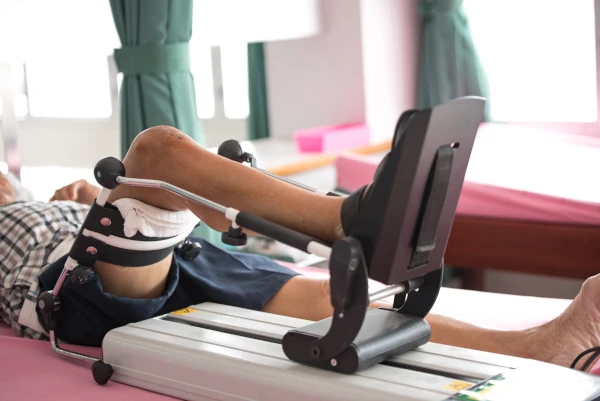
Frozen Shoulder: Stages, Best Treatments, Sleep Tips, and How to Cure It
- Dr. Kirti (MPT)
Connect with our expert physiotherapist for personalized physiotherapy advice.
Frozen shoulder, also known as adhesive capsulitis, is a condition that causes pain and stiffness in the shoulder joint. It can severely limit movement and affect your quality of life. In this blog, we will cover the stages of frozen shoulder, the best treatments, tips on how to sleep comfortably, and ways to cure the condition.
Understanding the Stages of Frozen Shoulder
Frozen shoulder typically progresses through three stages, each with distinct symptoms:
Common Conditions Linked to Pelvic Floor Dysfunction
- Freezing Stage (Painful Stage)
- Duration:
6 weeks to 9 months
- Symptoms:
Gradual onset of shoulder pain that worsens over time. Movements become restricted, and simple activities such as reaching or lifting the arm become difficult.
- Pain:
More pronounced during this stage, often worse at night and affecting sleep quality.
- Duration:
- Frozen Stage (Stiffening Stage)
- Duration:
4 to 6 months
- Symptoms:
Pain may lessen, but shoulder stiffness worsens, further restricting mobility. Activities like dressing, combing hair, or reaching behind your back become extremely difficult.
- Pain:
Reduces slightly, but the shoulder feels (locked )or stuck in place.
- Duration:
- Thawing Stage (Recovery Stage)
- Duration:
6 months to 2 years
- Symptoms:
Shoulder mobility begins to improve, and stiffness slowly decreases. Full recovery of movement can take several months to a few years.
- Pain:
Pain continues to subside, and the shoulder gradually regains its range of motion.
- Duration:
Best Treatment Options for Frozen Shoulder
Treating frozen shoulder focuses on relieving pain and restoring shoulder mobility. Here are some of the best treatments:
- Physical Therapy (Physiotherapy)
- Why It Works:
Physical therapy is one of the most effective ways to treat frozen shoulder. It involves gentle stretching exercises that gradually improve the shoulder’s range of motion and reduce stiffness.
- Exercise Plan:
A physiotherapist will design a customized exercise program that targets the affected muscles and joints. Exercises may include passive stretches, active range-of-motion exercises, and strength training to restore normal movement.
- Why It Works:
- Medications
- Pain Relief:
Over-the-counter medications like ibuprofen, naproxen, or aspirin can help reduce inflammation and ease pain. For more severe cases, a doctor may prescribe stronger pain relievers or anti-inflammatory drugs.
- Corticosteroid Injections:
For short-term relief, corticosteroid injections can be given directly into the shoulder joint. These injections reduce inflammation and allow for easier movement, particularly in the freezing stage.
- Pain Relief:
- Heat and Ice Therapy
- Heat:
Applying heat to the shoulder can relax stiff muscles and increase blood flow, making stretching easier.
- Ice:
Ice packs can help reduce inflammation and numb the area, providing temporary pain relief.
- Hydrodilatation
This is a non-surgical procedure where a saline solution is injected into the joint capsule to stretch it and improve range of motion. It’s typically done under local anesthesia and is considered when other non-surgical treatments fail.
- Surgery (In Rare Cases)
If non-surgical treatments do not work, arthroscopic surgery may be considered to remove scar tissue or adhesions in the shoulder joint. This is typically a last resort and only considered for severe cases that do not respond to physical therapy or injections.
- Heat:
How to Sleep Comfortably with Frozen Shoulder
Sleeping with a frozen shoulder can be challenging due to the pain and stiffness. Here are some tips for a better night’s sleep:
- Sleep Position
- On Your Back:
Sleeping on your back is often the most comfortable position, as it puts the least amount of pressure on your shoulder. Place a pillow under your affected arm for added support.
- On Your Side (Opposite Shoulder):
f you prefer sleeping on your side, sleep on the side opposite the frozen shoulder. Use a pillow to hug and support the affected arm, keeping it in a slightly elevated position.
- On Your Back:
- Pillow Support
Use a firm pillow under your head and another under your affected arm. The extra support will help relieve pressure and prevent the shoulder from moving into painful positions during the night.
- Heat Therapy Before Bed
Applying a heating pad or warm towel to the affected shoulder before bed can help relax tight muscles and reduce stiffness, making it easier to fall asleep.
- Pain Relief Medications
Taking an over-the-counter pain reliever about 30 minutes before bed can help reduce discomfort and allow for a better night’s rest.
How to Cure Frozen Shoulder
While frozen shoulder often resolves on its own, you can take steps to speed up recovery and improve mobility. Here’s how to cure frozen shoulder more effectively:
- Early Diagnosis and Treatment
The earlier frozen shoulder is diagnosed and treated, the better the outcomes. Start physical therapy as soon as possible to prevent further loss of movement.
- Consistent Exercise
Stick to your prescribed exercise routine. Regular stretching and strengthening exercises can help break down adhesions in the shoulder joint and restore mobility.
- Stay Active
Even though it’s tempting to avoid moving your shoulder due to pain, remaining active is crucial. Avoid complete immobility, as this can worsen the condition. Gentle, controlled movements can help speed up recovery.
- Pain Management
Managing pain effectively is key to continuing exercises and physical therapy. Follow your healthcare provider’s recommendations for pain relief methods like heat, ice, or medication.
- Stay Patient
Recovery from frozen shoulder can take time—sometimes up to 2 years. However, with consistent treatment and therapy, most people regain full shoulder mobility.
Conclusion
Frozen shoulder can be a frustrating and painful condition, but with the right approach, it is treatable. Physical therapy remains the cornerstone of treatment, supported by medications, heat/ice therapy, and proper sleep positioning. Early diagnosis and consistent exercise are key to overcoming the condition. While recovery can take time, following a structured treatment plan will help you regain movement and live pain-free once again. By understanding the stages, treatment options, and sleep strategies, you can take control of your frozen shoulder and begin your journey to recovery.
Connect with our expert physiotherapist for personalized physiotherapy advice.



